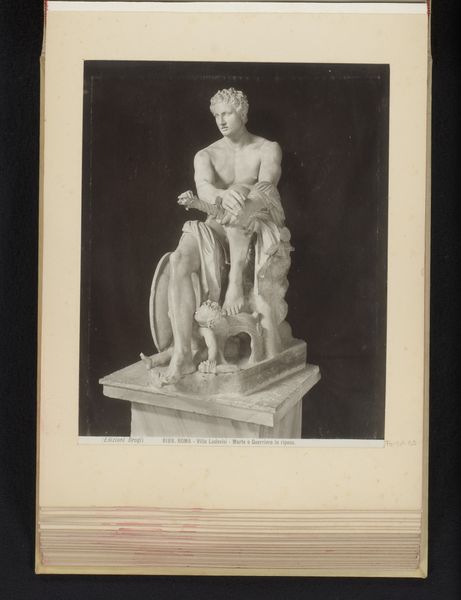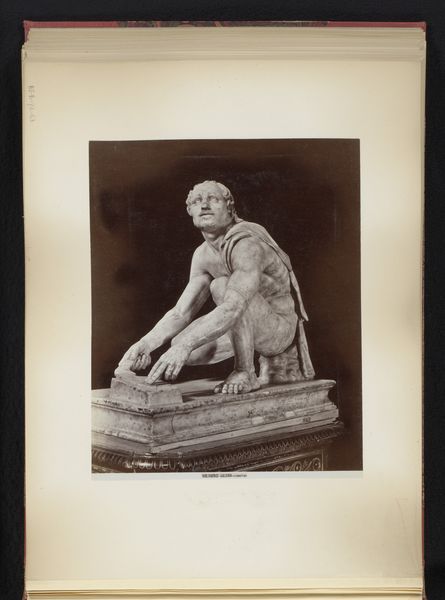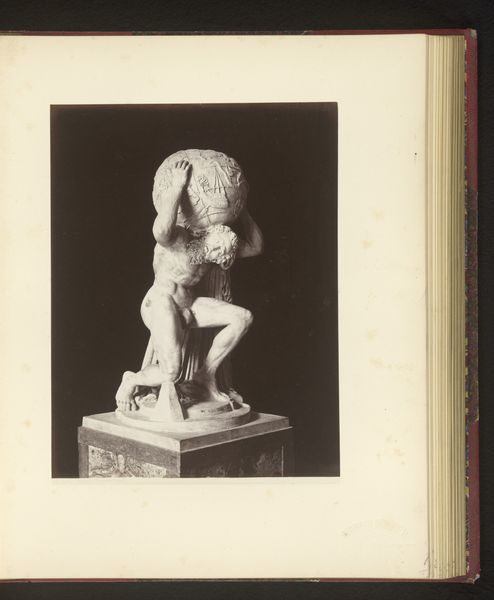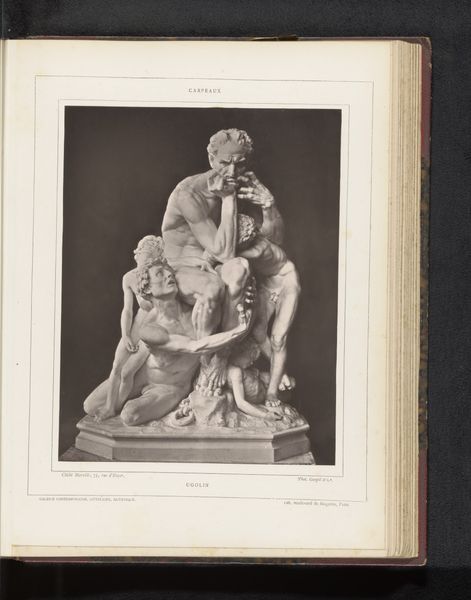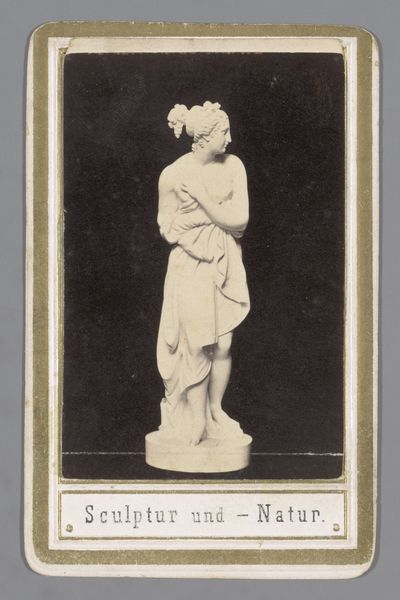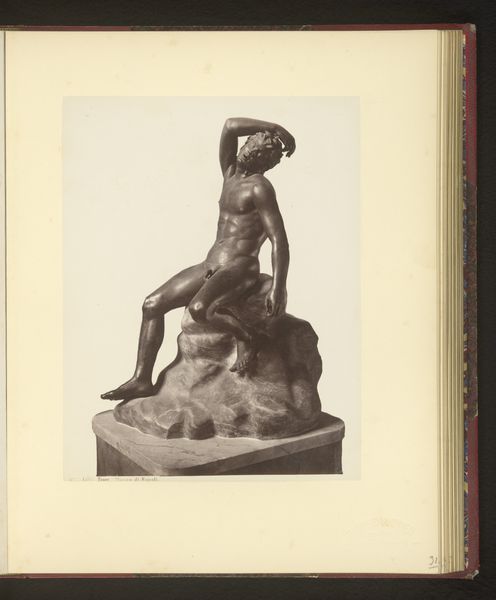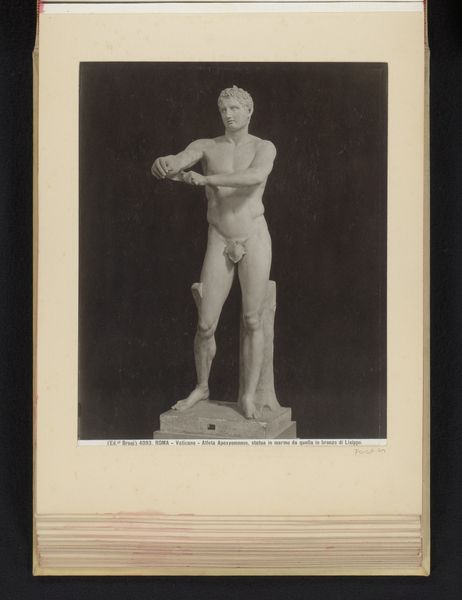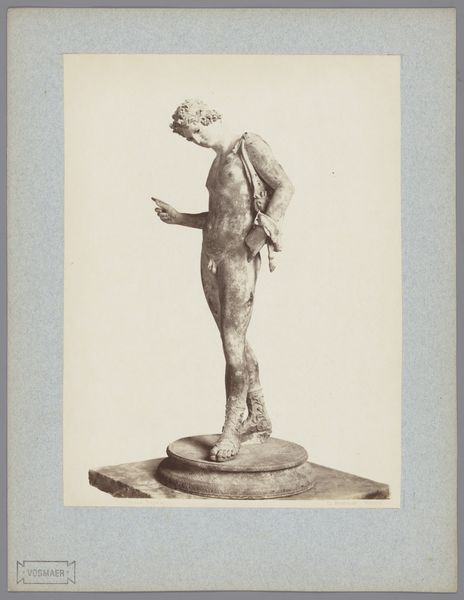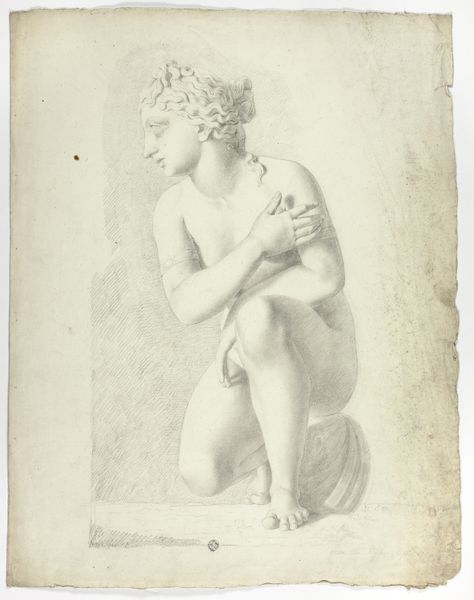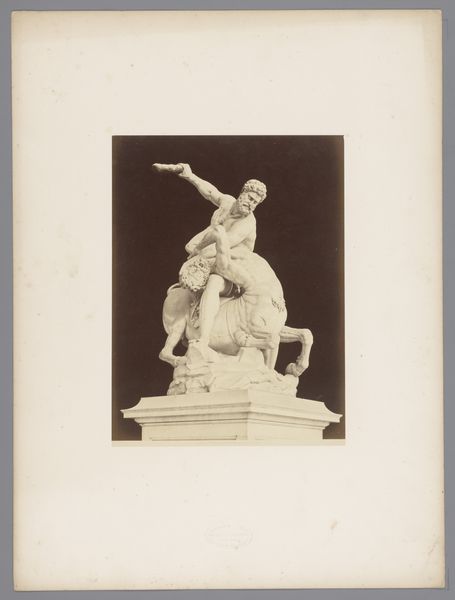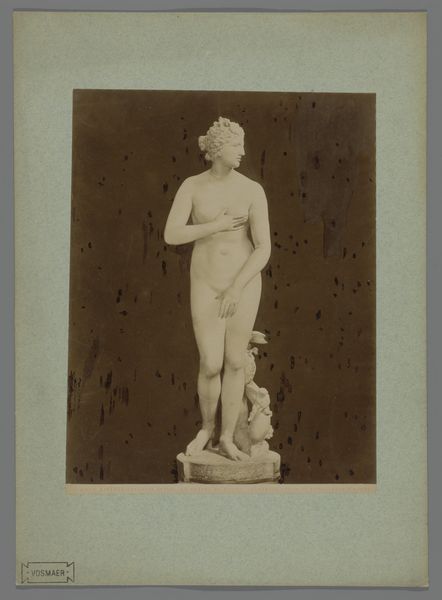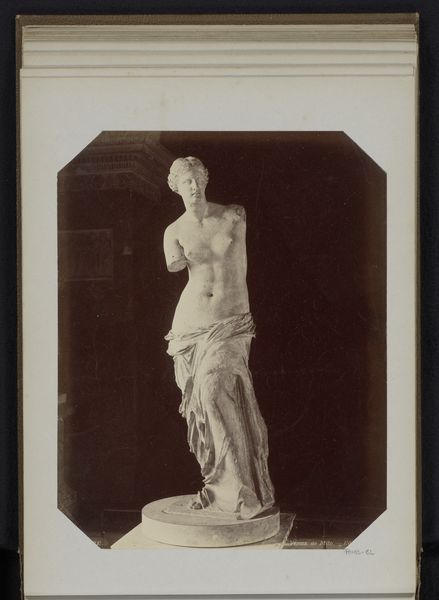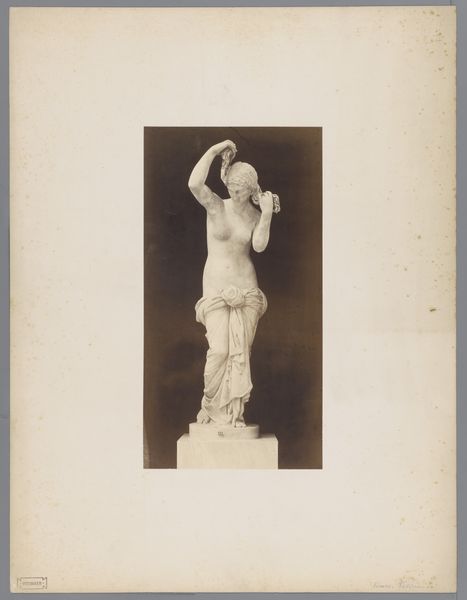
Sculptuur in de Vaticaanse Musea te Vaticaanstad, voorstellende een knielende Venus before 1907
0:00
0:00
photography, sculpture, marble
#
portrait
#
sculpture
#
classical-realism
#
photography
#
ancient-mediterranean
#
sculpture
#
academic-art
#
marble
Dimensions: height 250 mm, width 198 mm
Copyright: Rijks Museum: Open Domain
Curator: This image, created before 1907 by Edizione Brogi, showcases a sculpture located in the Vatican Museums: a kneeling Venus. Editor: My first impression is one of serene melancholy. The stark lighting emphasizes the cool smoothness of the marble and Venus’ introspective pose adds to a sense of quiet contemplation. Curator: It's fascinating how Brogi, a well-known photography firm in its time, capitalized on reproducing classical artworks. These images helped spread art and culture widely, shaping popular understanding of these works and establishing their authority. This photograph highlights how museums actively cultivate a visual history. Editor: Absolutely. Venus, in this moment of vulnerability, still radiates a powerful presence. Her hand gestures outward, seemingly directing or bestowing some unknown gift. Is she anointing the space? Could it be a symbolic gesture of love or command? It definitely captures something beyond simple beauty. Curator: The photograph, as a document, takes on its own layers of meaning over time, separate from the statue's initial reception. We might ponder the photographer’s perspective here. What political undertones are being indirectly portrayed, by the depiction of antiquity? Editor: The kneeling pose also carries weight. It can imply reverence, supplication, even defeat, though there’s undeniable strength in Venus' physique. What narratives of femininity were implicitly communicated by representing a goddess in this manner? Curator: Photography served a crucial role in preserving and disseminating knowledge. It brought the relics of classical antiquity into the modern sphere, influencing artistic and social tastes while reinforcing a certain canon. We must remember though, access was often exclusive to the bourgeois class, influencing what and how they appreciated art. Editor: This piece reveals how classical symbols continue to echo throughout our visual language, constantly being reinterpreted. This snapshot offers insight into how Venus was understood, admired, and shared at the start of the 20th Century. Curator: Yes, by viewing it through a lens, so to speak. It's not simply documentation; this photograph actively participates in constructing the ongoing history of the sculpture and the goddess herself. Editor: Indeed. It leaves me contemplating the enduring power of symbolism and how it molds both cultural and individual experience across time.
Comments
No comments
Be the first to comment and join the conversation on the ultimate creative platform.

